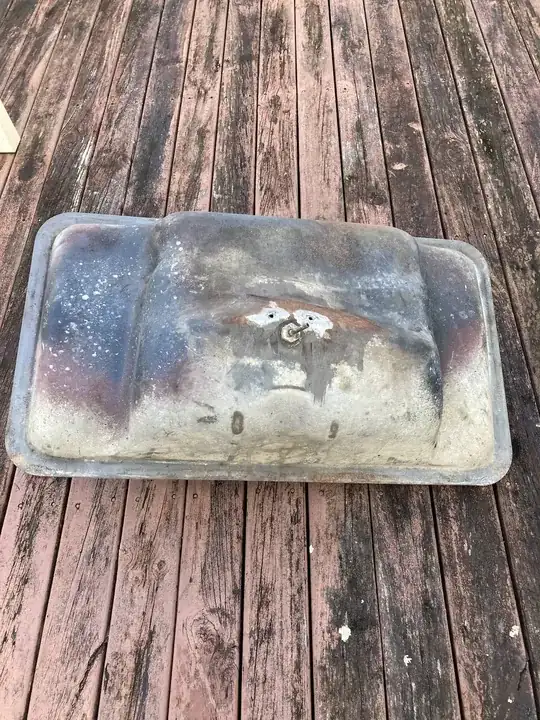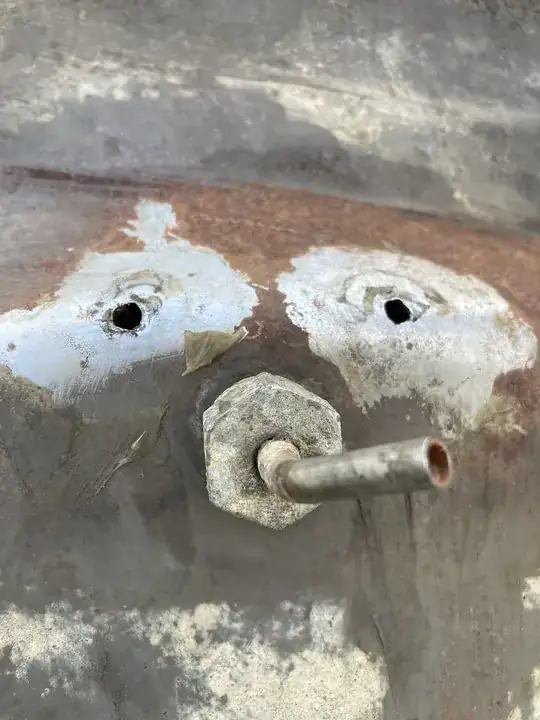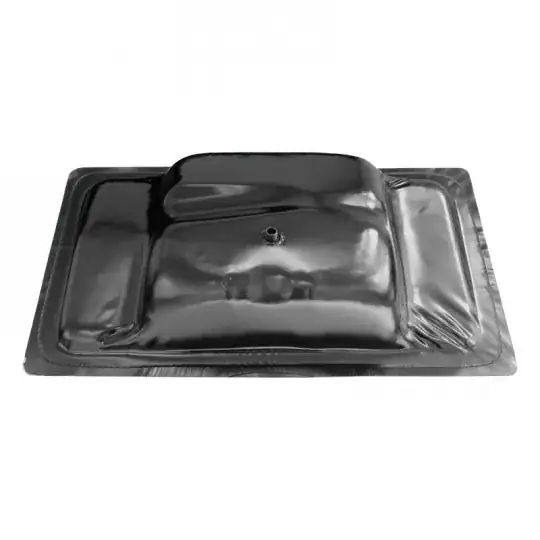Are you sure those are the only holes? Looks like at some time there was water in the petrol, and it sank to the bottom (petrol floats) so it rusted away the steel, and someone (you?) has cleaned the rusty edges up. Look for pinholes, perhaps use air pressure and soapy water while blocking all the normal holes.
Welding a fuel tank is not recommended - you'd need to purge and the whole thing with inert gasses or water, but welding near water will make a lot of heat which is steam that interferes with the weld.
The common repair is a 2 part epoxy like JB Weld, which claims to be petrol-resistant. It is hard because you don't have any access to the inside.
I'd go with a thin stainless steel patch, which is completely "glued" to the tank with well-mixed epoxy, and a well-prepared surface on the tank and the patch. Then another layer of epoxy on the outside once the first one has set completely. You might choose to use some fibreglass or other structural cloth as an intermediate layer.
Some people use fibreglass, but it may not be fuel-proof. Check the labels before buying anything.
Your other options are a used tank from a donor car, or a brand-new reproduction tank. Check locally for a VW specialist who can advise.
You might prefer a new plastic or aluminium tank, perhaps with better mounts or more capacity, or more crash-damage resistance.
 Hi there, I have a 1965 VW Beetle (in Australia) that I am trying to repair. To get it running, it just seems that I just need to repair two holes at the bottom of the fuel tank (it is leaking petrol/gas). Are these holes part of the design (they don't look like the result of damage)? Is there parts associated to filling these holes?
Hi there, I have a 1965 VW Beetle (in Australia) that I am trying to repair. To get it running, it just seems that I just need to repair two holes at the bottom of the fuel tank (it is leaking petrol/gas). Are these holes part of the design (they don't look like the result of damage)? Is there parts associated to filling these holes?
